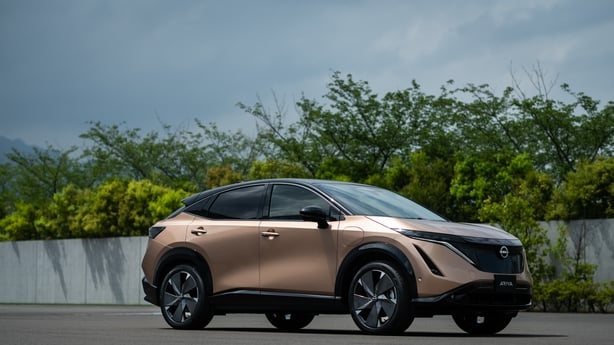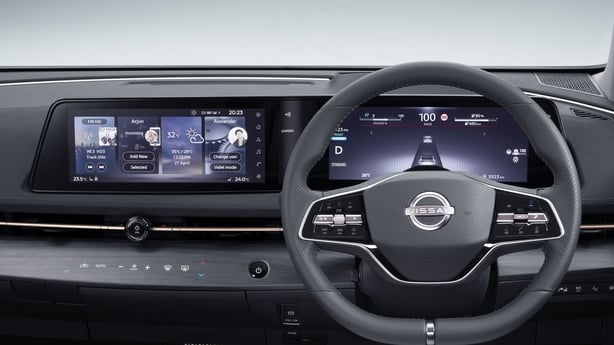Twelve years after it introduced its innovative electric Leaf, Nissan is back with its first all-electric crossover - the Aryia.
Although it shares a common platform with Renault, Nissan has sought to distance its Ariaya crossover from its French partner and is now emphasising a rather more specific Japanese design philosophy.
Nissan's biggest challenge, however, is going to be whether it can catch up with the presence already established on the market by two of its current top competitors - Kia and Hyundai. The Kia EV 6 and the Hyundai Ioniq 5 have been around for a while now and they haven’t just just garnered car of the year awards, they’ve re-written the playbook for what people can now expect from their electric cars.
Charging times are just one example. Both Kia and Hyundai have adopted 800 volt charging, while Nissan will still be relying on 400 volt architecture. That essentially means twice the fast charging time of either of the Korean offerings. Automotive News - the industry bible - recently reported that 800 volt capacity would probably be the norm in about three years, even if the cost of the technology is currently an issue. Only a handful of manufacturers are using it at present.

Nissan is already a little behind in its launch time - due to the semi conductor shortage - leaving Kia and Hyundai with a better market run in time. But Nissan has a large and loyal customer base - its Leaf converted many to electric motoring and its Qashqai revolutionised the crossover segment. Brand loyalty may be a key issue in terms of the Aryia’s success.
The Ariya goes on sale in a couple of months time. So what's the offering ? Nissan has eschewed the sharp and angular - and sometimes jagged - lines, or the lower-slung look, of its main competitors. Instead it has gone for a design with a single defining line around the car - called a "horizon line" and the overall look is crisp and modern. Like all electric cars, it doesn’t require a grill but the designers have managed to create a front that still has a passing resemblance to one with more traditional features.
As with other similar cars, it sits on 20" wheels, which are another defining feature.

The interior is not quite as impressive as either the Kia or the Hyundai, with the Nissan lacking just a little of that big infotainment and information screen panache. It still looks good though.
Like the others, the Nissan has a flat floor which greatly adds to the sense of interior space and comfort.
The car comes with a choice of two batteries with 63 kWh and 87 kWh capacity and 217 horse power and 242 horse power outputs respectively. Batteries add significant weight to these cars and the Nissan comes in at between 1800 and 2300 kilos, depending on the battery size. Those are the kind of weights that affect efficiency significantly.
Nissan claims a range of about 400 kilometres for the smaller battery version and 529 for the bigger one. As I have said several times before, I have yet to drive an electric car that delivers on the claimed range and the true range tends to be at least 25 per cent less because of all the factors that affect a car’s performance. I’ll have to wait for a proper test drive to see where the Aryia comes in in this regard.
The prices are €48,995 for the entry level version and €66,995 for the bigger battery version, including grants. For comparison, the Ioniq 5 comes in at €38,995 for its smaller battery version and costs another €10,000 for its larger battery version, which most customers seem to be opting for. There is not much in the difference between the entry level Nissan and the entry level Hyundai when it comes to claimed range (some 22 km) but there is in terms of price.
Nissan has pretty much equalled the competition in terms of standard equipment and safety features, which include a 360 degree monitor, collision warning, emergency braking, intelligent cruise control and pedestrian and cyclist detection measures.
Although I only had a brief introductory drive, the Ariya proved its weight did not greatly hamper its acceleration nor its handling. I’ll have to wait for a longer drive to discover more about the key consideration- its range.


